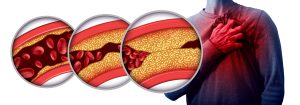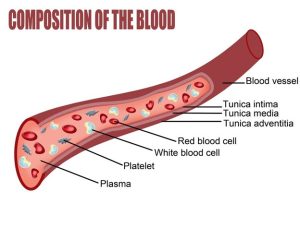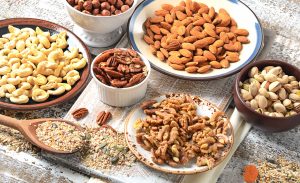
by Suzanne Holloway | Feb 5, 2025
February is a month to celebrate matters of the heart—both in love and in health. With Valentine’s Day and American Heart Month, February is the perfect time to cherish our loved ones while committing to a heart-healthy lifestyle. Heart disease is the leading cause of death in the United States, accounting for 1 in 5 deaths in 2022, according to the CDC. By understanding the risks and taking proactive steps, we can build healthier lives, families, and communities.
Heart Disease Defined

© freshidea / Adobe Stock
So, what is heart disease? The term “heart disease” actually refers to several conditions affecting the heart, but the most common is coronary artery disease (CAD). CAD occurs when deposits of Low-Density Lipoprotein (LDL), “bad” cholesterol, and other substances form plaque in the arteries. Over time, this plaque buildup can narrow the arteries, restricting or blocking blood flow.
Other types of heart diseases include arrhythmias (abnormal heart rhythms), cardiomyopathy (abnormal heart muscle), heart valve disease, and heart failure. Understanding these conditions is essential to recognizing potential and current risk factors and acting.
Knowing Your Risks & Making Changes
When it comes to heart health, some risk factors are beyond our control, such as genetics and age. These elements are woven into the fabric of who we are, making them difficult—or impossible—to change. However, lifestyle choices, such as diet, physical activity, smoking, and even some environmental factors can be changed at the individual level. In the United States, nearly half of the population has at least one of these three key risk factors for heart disease:
- Hypertension (High Blood Pressure)
- High LDL Cholesterol
- Smoking
Lifestyle changes—such as improving your diet, staying active, and avoiding smoking—can make a significant difference. Taking care of your heart is much like nurturing a great relationship. It begins with small steps and grows stronger with consistent care, dedication, and some compromises. Your daily decisions about food, exercise, and habits like alcohol and tobacco use play a starring role in your heart health. While you can’t change your genetics, the choices you make today can lead to a healthier tomorrow.
Share the Love
Show your loved ones you care by encouraging heart-healthy habits. Plan an active date, such as a scenic nature walk or a fun bike ride, or cook a delicious and nutritious meal together. Celebrate the month of love by taking charge of your heart health and inspiring others to do the same.
Whether it’s making small changes to your routine, learning more about heart disease, or supporting awareness efforts, every step counts toward a healthier, happier future for you and those you love. Let’s make February a heartfelt celebration of love and health.
Additional Sources
CDC American Heart Month Communications Toolkit
About Heart Disease (CDC)
An Equal Opportunity Institution
by Kendra Hughson | Feb 5, 2025
In recent years, the conversation around mental health has gained significant momentum, particularly in the context of the workplace. As employees increasingly recognize the importance of mental well-being, employers are also beginning to understand that a mentally healthy workforce is not just a moral imperative but a key driver of productivity and overall business success.
The Importance of Mental Health in the Workplace
Mental health issues can significantly impact employee performance, engagement, and retention. According to the World Health Organization (WHO), depression and anxiety disorders cost the global economy approximately $1 trillion each year in lost productivity. The ripple effects can be profound: when employees are struggling with their mental health, it can lead to increased absenteeism, decreased morale, and lower job satisfaction.
Conversely, workplaces that prioritize mental health often see tangible benefits. Organizations that invest in employee well-being report higher productivity levels, reduced healthcare costs, and lower turnover rates. A supportive work environment can enhance employee loyalty, creativity, and teamwork, ultimately contributing to a positive corporate culture.
Creating a Supportive Environment

When employees are struggling with their mental health, it can lead to increased absenteeism, decreased morale, and lower job satisfaction. Photo Credit: Kendra Hughson
- Open Communication: Fostering a culture of open dialogue about mental health is crucial. Employees should feel safe discussing their mental health without fear of stigma or repercussions. Regular check-ins, feedback sessions, and anonymous surveys can help gauge employee sentiment and identify areas for improvement.
- Training and Resources: Providing training for managers on recognizing signs of mental health issues and how to support employees can create a more empathetic workplace. Additionally, offering resources such as Employee Assistance Programs (EAPs), mental health days, and wellness workshops can equip employees with the tools they need to manage stress and maintain their mental well-being.
- Flexible Work Arrangements: The rise of remote work has highlighted the importance of flexibility in maintaining work-life balance. Offering flexible hours or hybrid work options can help employees manage their personal and professional responsibilities more effectively, reducing stress and promoting mental health.
- Promoting Work-Life Balance: Encouraging employees to disconnect after work hours and take regular breaks can prevent burnout. Organizations can set a precedent by respecting personal time and promoting a culture where taking time off for mental health is not only accepted but encouraged.
- Wellness Programs: Implementing wellness initiatives such as mindfulness sessions, fitness classes, or stress management workshops can provide employees with valuable coping strategies. These programs can foster a sense of community and belonging, which is vital for mental health.
The Role of Leadership
Leadership plays a pivotal role in shaping workplace culture. Leaders who prioritize their own mental health and model healthy behaviors can inspire employees to do the same. By being transparent about their struggles and openly discussing mental health, leaders can help break down the stigma that often surrounds these issues.
Moreover, investing in leadership training that focuses on emotional intelligence can enhance leaders’ ability to empathize with their teams, recognize signs of distress, and foster a supportive environment.
Conclusion
As mental health continues to gain recognition as a critical component of overall well-being, organizations must take proactive steps to support their employees. By fostering open communication, providing resources, promoting work-life balance, and investing in leadership development, companies can create a workplace culture that prioritizes mental health. The benefits are clear: a healthier, happier workforce is not only good for employees but also for business success. Embracing mental health as a priority will lead to a more resilient, engaged, and productive workplace for all.
Source: ChatGBT
During the preparation of this work the author used ChatGBT to compile information about mental health in the workplace. After using this tool/service, the author reviewed and edited the content as needed and takes full responsibility for the content of the publication.

by Suzanne Holloway | Jan 10, 2025
January is recognized as National Blood Donor Month, but what makes blood and blood donation so important?
What is blood?
Blood is an essential bodily fluid that constantly flows through your body keeping it working. It has four main components: red blood cells, white blood cells, plasma, and platelets. Each part is designed to specific tasks.

This Photo by Unknown Author is licensed under CC BY-ND
Plasma
The majority of blood—approximately 55%—is composed of plasma. It is yellowish fluid that is a mixture of water, sugar, fats, proteins, and salts. Its main task is to transport blood cells throughout the body, but is also moves products like nutrients, proteins, hormones, and waste.
Red Blood Cells
The second largest component in blood is red blood cells (RBCs), or erythrocytes, making up about 40 – 45 percent of its total volume. These cells contain a protein called hemoglobin, which helps carry oxygen from the lungs to the rest of the body. Hemoglobin also gives RBCs, and the rest of the blood, their distinct red color.
White Blood Cells
White blood cells, or leukocytes, make up a much smaller portion than red blood cells about 1% of the blood. Their role is to protect the body from infections.
Platelets
Unlike red and white blood cells, platelets are not actually cells, but rather fragments of cells. They are the small component within blood being less than 1% of the total volume of blood. Platelets manage bleeding by assisting in the blood clotting process (coagulation) to seal damaged blood vessels to prevent a large amount of blood loss.
What are the blood types?
Blood also contains antigens, and a protein called the Rh factor, which serve as markers that determine a person’s blood type. Based on antigens alone, there are four main blood types: A, B, AB, and O. However, the Rh factor further classifies blood as either positive (+) or negative (-), resulting in a total of eight common blood types: A positive (A+), A negative (A-), B positive (B+), B negative (B-), AB positive (AB+), AB negative (AB-), O positive (O+), and O negative (O-). The most common blood type, in the United States, is O positive (O+); the least common, in the United States, is AB negative (AB-).
| Blood Type |
Approximate U.S. Population Percentage |
| A positive |
33% |
| A negative |
6% |
| B positive |
9% |
| B negative |
< 2% |
| AB positive |
< 4% |
| AB negative |
< 1% |
| O positive |
38% |
| O negative |
7% |
Understanding blood types enables healthcare providers to safely perform blood transfusions and organ transplants by ensuring compatibility between the donor and the recipient. Additionally, those with AB positive (AB+) blood are known as universal recipients; those with O negative (O-) blood are universal donors.
What’s the importance of blood donors?
According to the American Red Cross, someone in the United States needs blood and/or platelets every two seconds. That is about 29,000 units of red blood cells, 5,000 units of platelets, and 6,500 units of plasma needed daily. Nonetheless, there is no substitute or manufactured version for blood, which means it has to be generously donated by volunteers. It is important for surgeries, cancer treatment, childbirth, chronic illnesses (e.g., sickle cell disease), and traumatic injuries (e.g., car accidents). For more information on the donation process and how to prepare for a donation check out this website from the U.S. Department of Health and Human Services (HHS).
To the almost 7 million people in the United States who donate their time and blood, thank you. Your single donation has saved multiple lives, and your generosity is worth celebrating.
Sources
American Society of Hematology
Cleveland Clinic
American Red Cross

by Samantha Kennedy | Dec 6, 2024
In the middle of the daily jungle of stressors, there lies a powerful antidote: nature. Research has shown time and again that spending time in green spaces can significantly reduce stress levels and improve overall well-being. And here in Wakulla County, we are blessed with a variety of beautiful places where we can get close to nature.
Here are five ways in which nature works its magic on our minds and bodies:

Spending time with loved ones in nature has been shown to reduce feelings of stress, depression, and anxiety. (Adobe Stock photo)
Step into a forest and be greeted by a symphony of birdsong, rustling leaves, and babbling brooks. These natural sounds have a remarkable ability to soothe frayed nerves and calm anxious minds. Studies have found that exposure to nature sounds can lower levels of cortisol, the stress hormone, and promote relaxation. Additionally, the fragrances emitted by plants and trees, such as pine and lavender, have been shown to have therapeutic effects, reducing stress and anxiety.
The sight of lush greenery and expansive landscapes can have a huge impact on our mental well-being. Whether it is a sprawling meadow, a tranquil lake, or a majestic mountain range, natural scenery provides a visual feast that helps alleviate stress and elevate mood. Even a brief glimpse of nature through a window or a walk in the park during lunch breaks can rejuvenate the mind and enhance cognitive function.
Spending time outdoors exposes us to fresh air and sunlight, both of which are essential for our physical and mental health. Sunlight triggers the production of serotonin, a neurotransmitter that regulates mood and promotes feelings of happiness and relaxation. Additionally, exposure to natural light helps to regulate our circadian rhythms, leading to better sleep quality and overall well-being. Meanwhile, fresh air rich in oxygen boosts brain function and invigorates the body, providing a natural energy boost.
Engaging in physical activities such as hiking, gardening, or even just taking a leisurely stroll in the park allows us to reap the dual benefits of exercise and nature. Exercise is known to be a potent stress reliever, releasing endorphins that act as natural mood lifters. When combined with the calming effects of nature, physical activity becomes even more effective at reducing stress and improving mental health. Furthermore, outdoor exercise encourages mindfulness and promotes a sense of connection with the natural world, fostering feelings of peace and contentment.
Interacting with wildlife, whether it is watching birds soar overhead or spotting deer in the woods, fosters a sense of connection with the natural world. Studies have shown that spending time in nature and observing wildlife can evoke feelings of awe and wonder, which in turn reduces stress and increases feelings of happiness and well-being. Additionally, caring for pets or spending time with animals has been found to have therapeutic effects such as lowering blood pressure and reducing anxiety.
In conclusion, the healing power of nature is undeniable. By immersing ourselves in green spaces and reconnecting with the natural world, we can effectively manage stress, improve mental health, and enhance overall quality of life. So, the next time feelings of stress seem overwhelmed, consider taking a stroll in the park or escaping to the great outdoors.
An Equal Opportunity Institution.

by Kendra Hughson | Dec 6, 2024
We spend a considerable amount of time at work. Often, we spend more time with our co-workers than we do our own families. Fostering a workplace that promotes positive mental health is good for everyone. A positive work environment enhances productivity, job satisfaction, and overall employee well-being. While management and organizational policies play a significant role, contributing to a positive workplace culture is everyone’s job. Here’s how employees at any level can make a difference.
- Practice Open Communication
Open communication builds trust and fosters a culture of transparency. Employees can encourage a positive work environment by sharing ideas, voicing concerns respectfully, and providing constructive feedback. Listening actively to colleagues without interrupting or judging helps build mutual respect and makes everyone feel valued.
Tips to practice open communication:
- Share ideas or concerns in team meetings.
- Approach colleagues directly with questions or concerns instead of relying on assumptions.
- Use tools like Slack or email to keep teams updated, but also recognize the value of face-to-face interactions for more sensitive conversations.
- Show Appreciation and Recognition
Small gestures of appreciation can make a big difference in the workplace. Recognizing a coworker’s hard work or saying “thank you” for assistance fosters a sense of belonging. This builds morale and encourages others to acknowledge each other, creating a supportive environment.
Ways to show appreciation:
- Give a shoutout during meetings for colleagues who went above and beyond.
- Send a quick thank-you email or message to someone who helped you with a task.
- Celebrate team achievements, whether small or big.
- Be Respectful and Engaging
Respect and engagement are fundamental to a positive work environment. This means treating everyone with courtesy, considering others’ perspectives, and avoiding behaviors that could alienate colleagues. A respectful environment allows people to feel safe to express their ideas and be themselves.
How to promote respect and engagement:
- Avoid interrupting colleagues during discussions.
- Respect time boundaries and avoid unnecessary after-hours communication.
- Include others in discussions and decision-making whenever possible.
- Be open-minded and considerate of others’ ideas and backgrounds.
- Take Responsibility and Practice Accountability
Accountability is key to building trust within teams. By taking responsibility for their actions and learning from mistakes, employees contribute to a culture of honesty and reliability. When everyone holds themselves accountable, it minimizes blame-shifting and encourages collective problem-solving.
Ways to practice accountability:
- Own up to mistakes quickly and discuss how to avoid them in the future.
- Set realistic deadlines and follow through with commitments.
- Ask for help or clarification if you’re unsure about something.
- Collaborate and Encourage Teamwork
Teamwork is essential for creating a positive work environment where people feel connected. Collaboration helps foster a sense of community and shared purpose. It allows employees to leverage each other’s strengths and learn from diverse perspectives.
How to promote teamwork:
- Be willing to help team members who may need support.
- Participate actively in team projects and brainstorming sessions.
- Celebrate shared successes and acknowledge each team member’s contributions.
- Offer guidance to new employees or those adjusting to a role.
- Maintain a Positive Attitude
Just as negativity can spread quickly, a positive attitude is also infectious. When employees focus on solutions instead of dwelling on problems, it improves the morale of the whole team. A positive attitude, especially during challenging times, can inspire others to stay motivated.
Tips for maintaining a positive attitude:

When employees are struggling with their mental health, it can lead to increased absenteeism, decreased morale, and lower job satisfaction. Photo Credit: Kendra Hughson
- Practice gratitude by focusing on what’s going well each day.
- Take breaks to recharge and stay mentally refreshed.
- Offer encouragement and motivational words to colleagues.
- Set Healthy Boundaries
Healthy boundaries prevent burnout and maintain a work-life balance, which ultimately contributes to a happier and more productive workforce. By respecting both their own and others’ boundaries, employees help create a sustainable and positive work environment.
Strategies for setting boundaries:
- Avoid checking work emails or messages outside of work hours whenever possible.
- Politely decline additional tasks if your workload is full.
- Respect colleagues’ boundaries by scheduling meetings within core work hours.
- Participate in Team-Building Activities
Team-building activities help employees get to know each other and build trust outside regular work tasks. Taking part in these activities can boost morale and create bonds, leading to a more cohesive and positive workplace.
Ideas for team-building:
- Participate in organized events like team lunches, outings, or volunteer days.
- Engage in virtual games or icebreakers in remote or hybrid settings.
- Suggest occasional fun activities or breaks, like coffee chats or themed lunches.
- Prioritize Professional Growth
A positive work environment is one where employees feel they can grow and improve. By seeking opportunities to learn and develop, employees contribute to a culture of continuous improvement, which can inspire others as well.
Ways to prioritize growth:
- Attend workshops, webinars, or training sessions.
- Seek feedback from peers and managers to improve skills.
- Share knowledge with colleagues to create a collaborative learning culture.
- Be Mindful of Workplace Culture
Every workplace has a unique culture, and understanding it helps employees interact effectively and contribute positively. Being mindful of organizational values, norms, and unwritten rules can help employees align with and positively influence the workplace culture.
Tips for understanding workplace culture:
- Observe how communication happens within the team (formal vs. informal).
- Engage in onboarding or mentorship programs that introduce new hires to the culture.
- Contribute ideas in line with the organization’s goals and mission.
Conclusion
Building a positive work environment is everyone’s job. By focusing on open communication, respect, appreciation, accountability, and a collaborative mindset, employees can foster a culture of positivity and engagement. Small, consistent actions make a big difference in creating a supportive, enjoyable, and productive workplace for everyone.
Source: ChatGPT
During the preparation of this work the author used ChatGPT to compile information about mental health in the workplace. After using this tool/service, the author reviewed and edited the content as needed and takes full responsibility for the content of the publication.

by Samantha Kennedy | Nov 15, 2024
Maintaining a healthy diet can be challenging, especially for individuals managing high blood sugar levels. Choosing the right snacks is crucial for avoiding blood sugar spikes and keeping energy levels stable throughout the day. Here, we explore several healthy snack options that are both delicious and beneficial for those with high blood sugar.

Snacks high in protein, fiber, and healthy fats such as nuts and seeds are a healthy choice for people looking to manage their high blood sugar. (Source: Adobe Stock photo)
Nuts and seeds. These foods are excellent snacks for people with high blood sugar. Almonds, walnuts, flaxseeds, and chia seeds are rich in fiber, healthy fats, and protein, which help stabilize blood sugar levels. A handful of almonds or a tablespoon of chia seeds in a smoothie can keep you feeling full and satisfied without causing a spike in blood sugar. Additionally, these snacks are packed with vitamins and minerals that contribute to overall health.
Fresh vegetables. Foods like carrots, celery, and bell peppers are low in calories and carbohydrates, making them ideal for blood sugar management. These veggies are high in fiber and water content, which help in maintaining a feeling of fullness. Pairing them with hummus or a Greek yogurt dip adds protein and flavor, creating a balanced and tasty snack option.
Berries. Foods such as strawberries, blueberries, and raspberries are not only delicious but also have a low glycemic index, meaning they do not cause significant spikes in blood sugar. Rich in antioxidants, vitamins, and fiber, a small bowl of mixed berries can be a satisfying snack. For added protein, consider combining them with a small portion of Greek yogurt or cottage cheese.
Whole-grain crackers and avocado. This combination provides a perfect balance of complex carbohydrates, healthy fats, and fiber. Whole grains help slow digestion, preventing sudden increases in blood sugar levels, while avocados offer monounsaturated fats that are heart-healthy and satisfying. Sprinkle some chia or sesame seeds on top for an extra nutritional boost.
Greek yogurt. This very versatile snack is high in protein and lower in sugar compared to regular yogurt. It is an excellent option for people with high blood sugar, as protein can help slow the absorption of carbohydrates, thereby preventing spikes. For a more filling snack, add a handful of nuts or fresh berries to a cup of Greek yogurt.
Hard-boiled eggs. This is a simple and convenient snack option packed with high-quality protein and healthy fats. They can help stabilize blood sugar levels and keep hunger at bay. Sprinkle a little salt and pepper or enjoy them with a side of fresh veggies for a complete snack.
Edamame. Also known as steamed soybeans, these are an excellent snack choice for those managing high blood sugar. They are high in protein, fiber, and essential vitamins and minerals. A half-cup serving of edamame provides a satisfying and nutritious snack that supports blood sugar control.
For individuals with high blood sugar, mindful snacking is essential to maintaining stable glucose levels and overall health. By choosing nutrient-dense, low-glycemic snacks such as nuts, fresh vegetables, berries, whole grains, Greek yogurt, hard-boiled eggs, and edamame, it is possible to enjoy delicious and satisfying snacks without compromising blood sugar control. Incorporating these healthy options into your daily routine can make a significant difference in managing high blood sugar effectively.
For more information about healthy eating for people with or without high blood sugar, please contact Samantha Kennedy, County Extension Director, at 850.926.3931.
An Equal Opportunity Institution.










